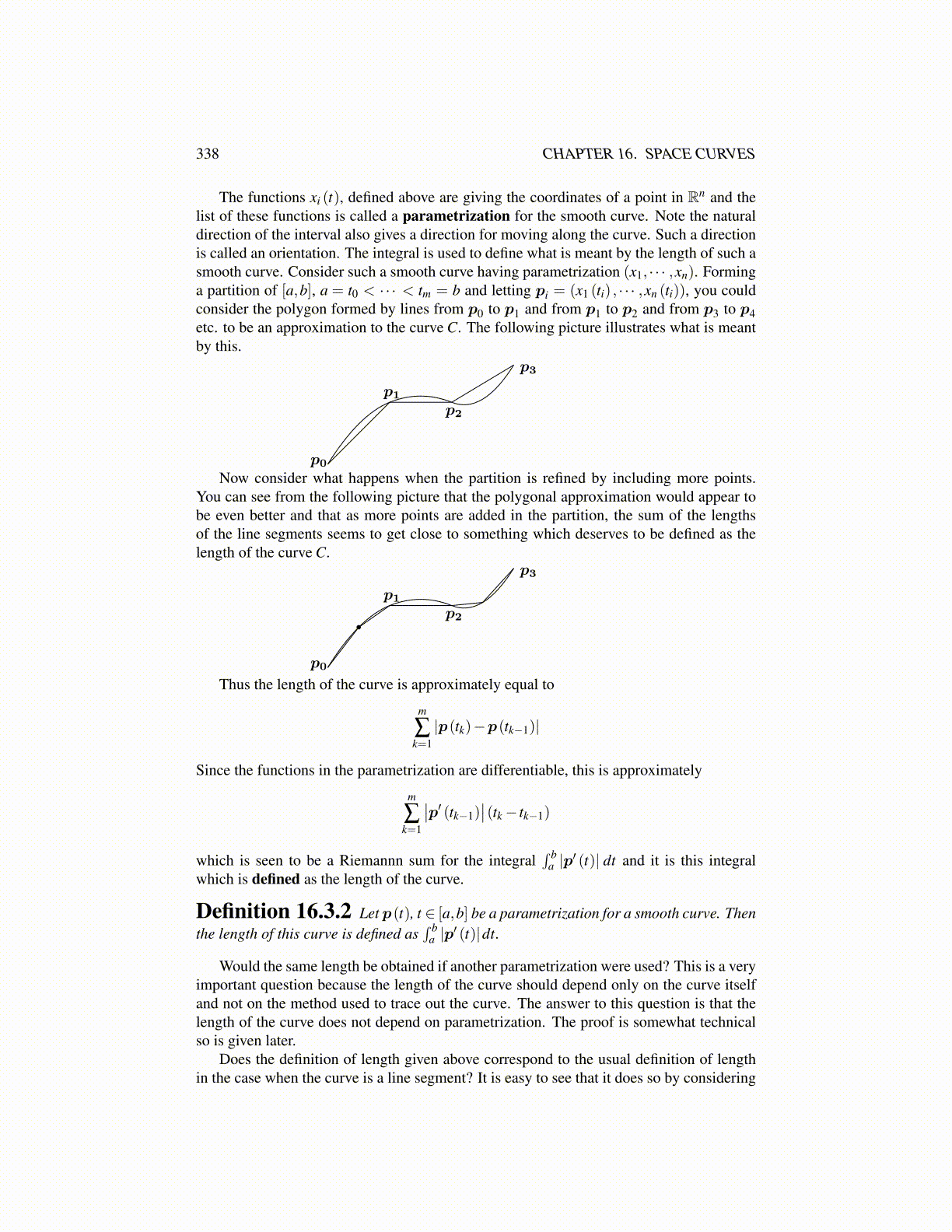
338 CHAPTER 16. SPACE CURVES
The functions xi (t), defined above are giving the coordinates of a point in Rn and thelist of these functions is called a parametrization for the smooth curve. Note the naturaldirection of the interval also gives a direction for moving along the curve. Such a directionis called an orientation. The integral is used to define what is meant by the length of such asmooth curve. Consider such a smooth curve having parametrization (x1, · · · ,xn). Forminga partition of [a,b], a = t0 < · · · < tm = b and letting pi = (x1 (ti) , · · · ,xn (ti)), you couldconsider the polygon formed by lines from p0 to p1 and from p1 to p2 and from p3 to p4etc. to be an approximation to the curve C. The following picture illustrates what is meantby this.
p0
p1
p2
p3
Now consider what happens when the partition is refined by including more points.You can see from the following picture that the polygonal approximation would appear tobe even better and that as more points are added in the partition, the sum of the lengthsof the line segments seems to get close to something which deserves to be defined as thelength of the curve C.
p0
p1
p2
p3
Thus the length of the curve is approximately equal to
m
∑k=1
|p(tk)−p(tk−1)|
Since the functions in the parametrization are differentiable, this is approximately
m
∑k=1
∣∣p′ (tk−1)∣∣(tk − tk−1)
which is seen to be a Riemannn sum for the integral∫ b
a |p′ (t)| dt and it is this integralwhich is defined as the length of the curve.
Definition 16.3.2 Let p(t), t ∈ [a,b] be a parametrization for a smooth curve. Thenthe length of this curve is defined as
∫ ba |p′ (t)|dt.
Would the same length be obtained if another parametrization were used? This is a veryimportant question because the length of the curve should depend only on the curve itselfand not on the method used to trace out the curve. The answer to this question is that thelength of the curve does not depend on parametrization. The proof is somewhat technicalso is given later.
Does the definition of length given above correspond to the usual definition of lengthin the case when the curve is a line segment? It is easy to see that it does so by considering